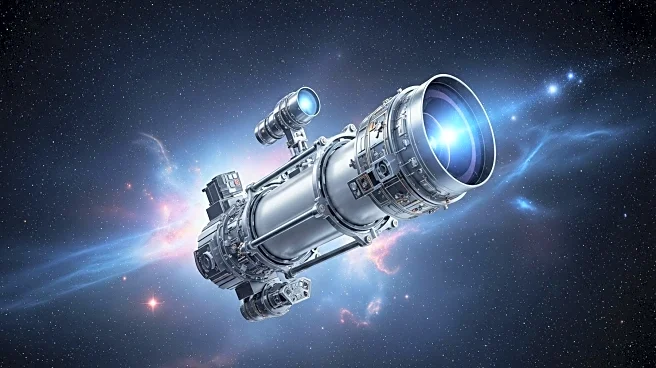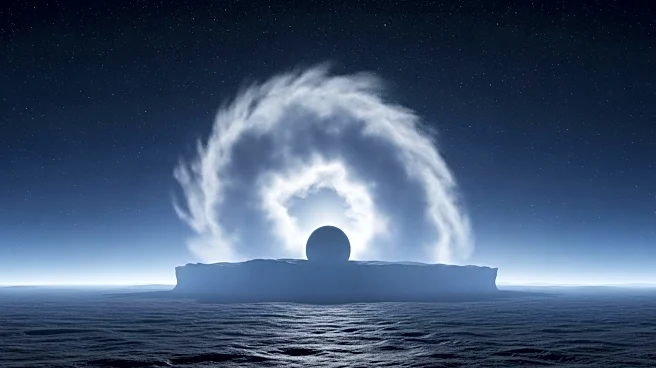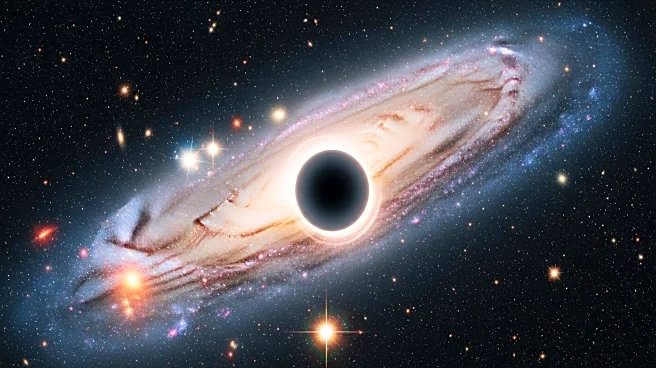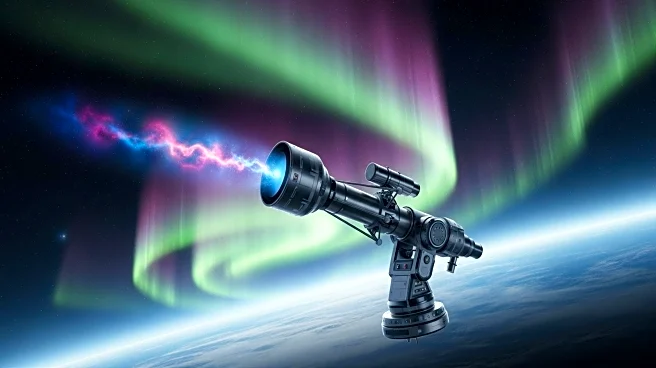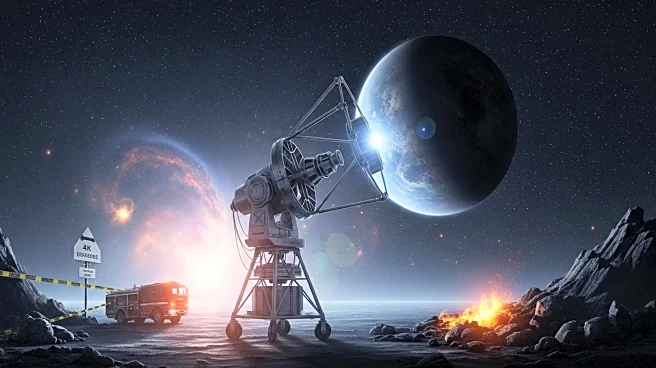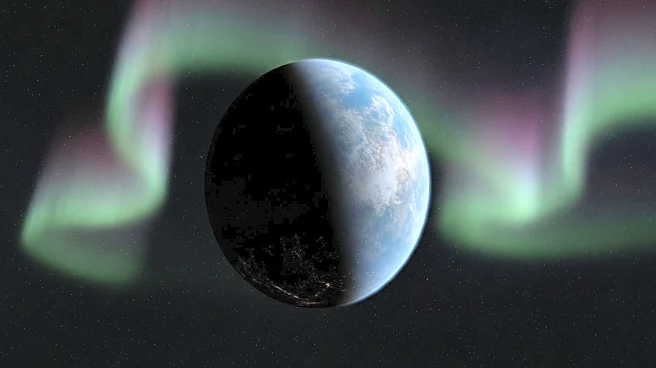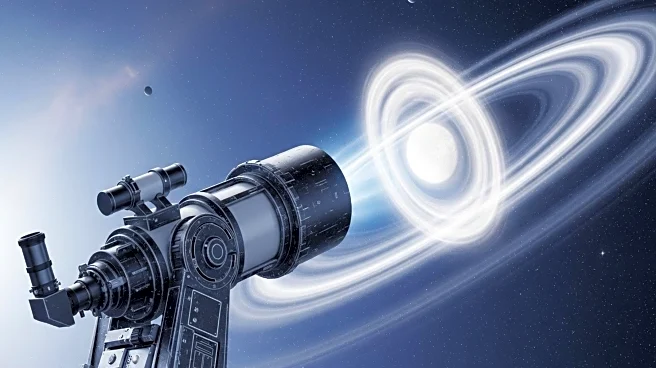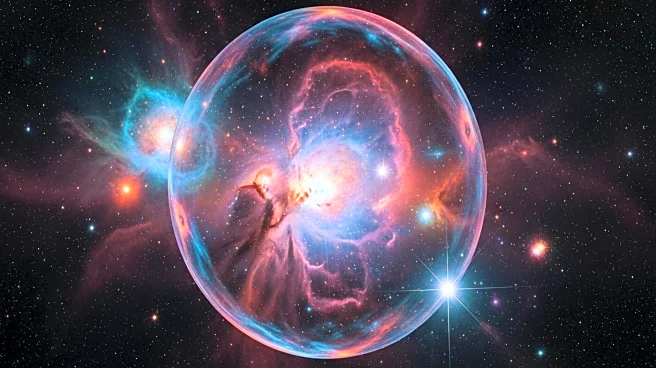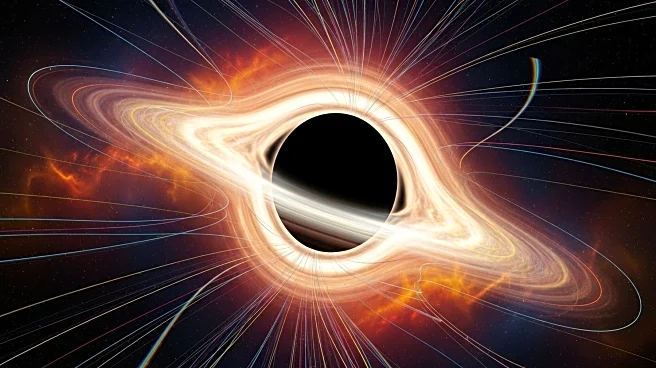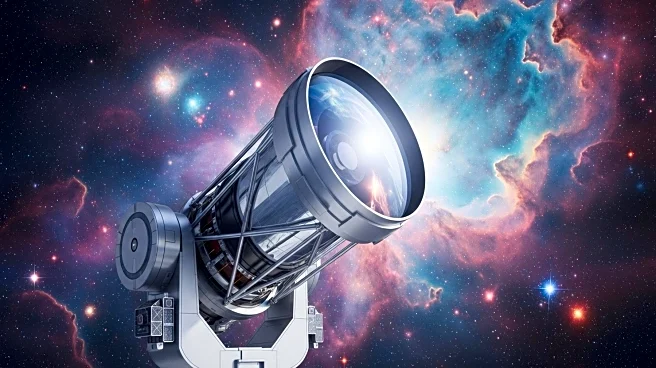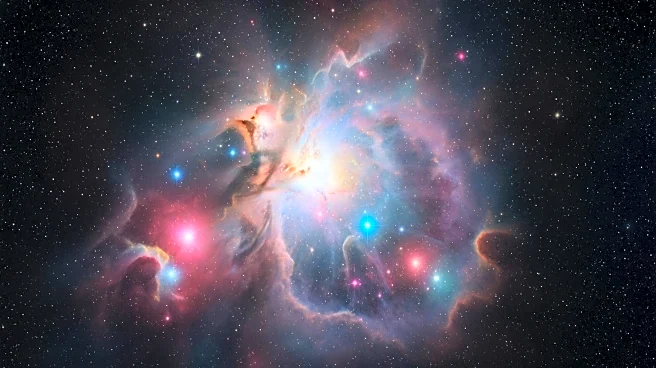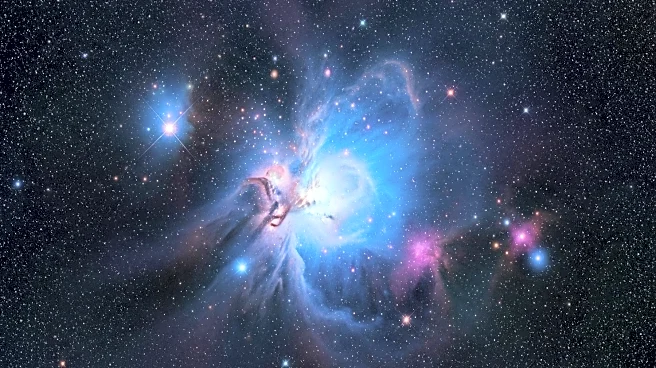What is the story about?
What's Happening?
The James Webb Space Telescope has provided a detailed observation of the black hole jet at the center of galaxy M87, located over 50 million light-years away. This jet, a stream of superheated plasma, was first identified by astronomer Heber Curtis over a century ago. The recent observations have revealed intricate details of the jet, including bright regions and a less visible counter-jet. These features are thought to result from the jet's interaction with denser regions of gas, causing refocusing and recombination of the jet strands. The study, led by Maciek Wielgus and his team at the Institute of Astrophysics of Andalusia, utilized data from JWST's infrared sensors, which required reanalysis to filter out overwhelming starlight.
Why It's Important?
This observation is significant as it enhances the understanding of black hole jets, which are among the most studied yet least understood phenomena in astrophysics. The detailed imaging of M87's jet could provide insights into the mechanisms driving these jets and their interactions with surrounding materials. This knowledge is crucial for understanding the role of black holes in galaxy formation and evolution. The ability to observe the counter-jet, typically obscured due to its speed and direction, offers a new perspective on the dynamics of these cosmic structures.
What's Next?
The new data allows astronomers to model the gas structures surrounding M87, potentially leading to breakthroughs in understanding the environment around supermassive black holes. Future observations and analyses could further unravel the complexities of jet formation and behavior, contributing to broader astrophysical theories.
AI Generated Content
Do you find this article useful?


